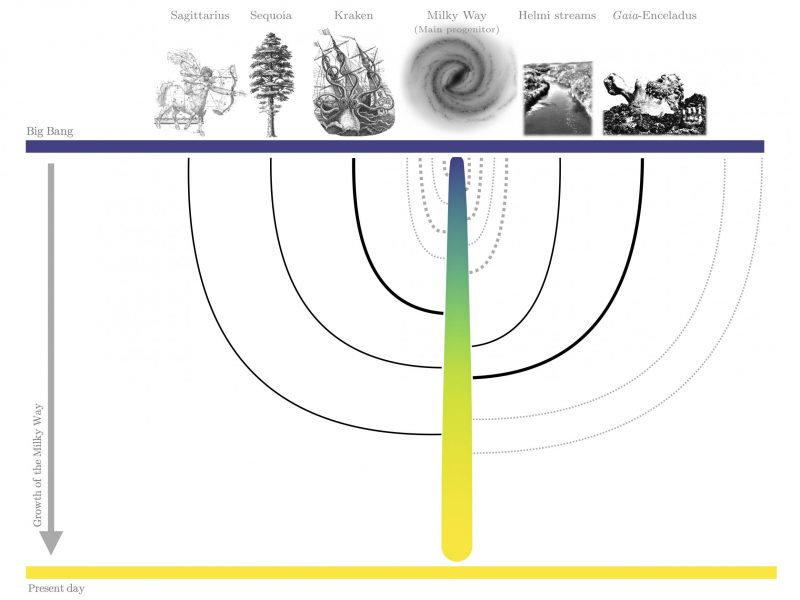In this holiday season, our thoughts invariably turn to our families. But astronomers have a much broader definition of family. While the rest of us are researching ancestral histories back through terrestrial years, astronomers are building a family tree on a much broader scale: the origin of our home galaxy, the Milky Way.
We are part of an island of an estimated 100 billion stars. But how did that island form? The best evidence is through a concept very familiar to the business world: merger.
We now think the Milly Way began at least a fourth of its current size, then grew as it absorbed smaller galaxies. The first, or primary merger, was thought to be with a smaller galaxy astronomers are calling Kraken about 11 billion years ago.
Remember this is on a cosmic time scale, which can be mind-blowing. So far, debris from at least five collisions with smaller galaxies have been found: Sagittarius, Sequoia, Kraken, the Helmi stream (which started as a dwarf galaxy), and Gaia-Enceladus; each contained more than 100 million stars. Plus ten more galaxies, containing at least 10 million stars, are also thought to have been sucked into the Milky Way. More detail about how we got to this point is in “New Milky Way Family Tree Reveals a Chaotic History” as posted by Paul Scott Anderson (https://earthsky.org/space/milky-way-family-tree-progenitor-galaxy-collisions-kraken?).

Bonus question: Do all large galaxies form this way? Like everything in the cosmos, it’s complicated. There’s a galaxy, poetically named C1-23152, which we think formed when the universe was very young — only 500 million years. It contains about 200 billion stars, which means it must have produced as many as 450 stars per year, or more than one star per day. By contrast, the Milky Way is thought to form one to two every year (https://earthsky.org/space/c1-23152-galaxy-built-itself-not-via-galaxy-merger?).
So is the Milky Way as big is it will get? No, the Andromeda galaxy, our nearest large spiral galaxy, will eventually be pulled in too. But that won’t happen for another 4.5 billion or so years.
I just hope someone will be around then to witness it.
